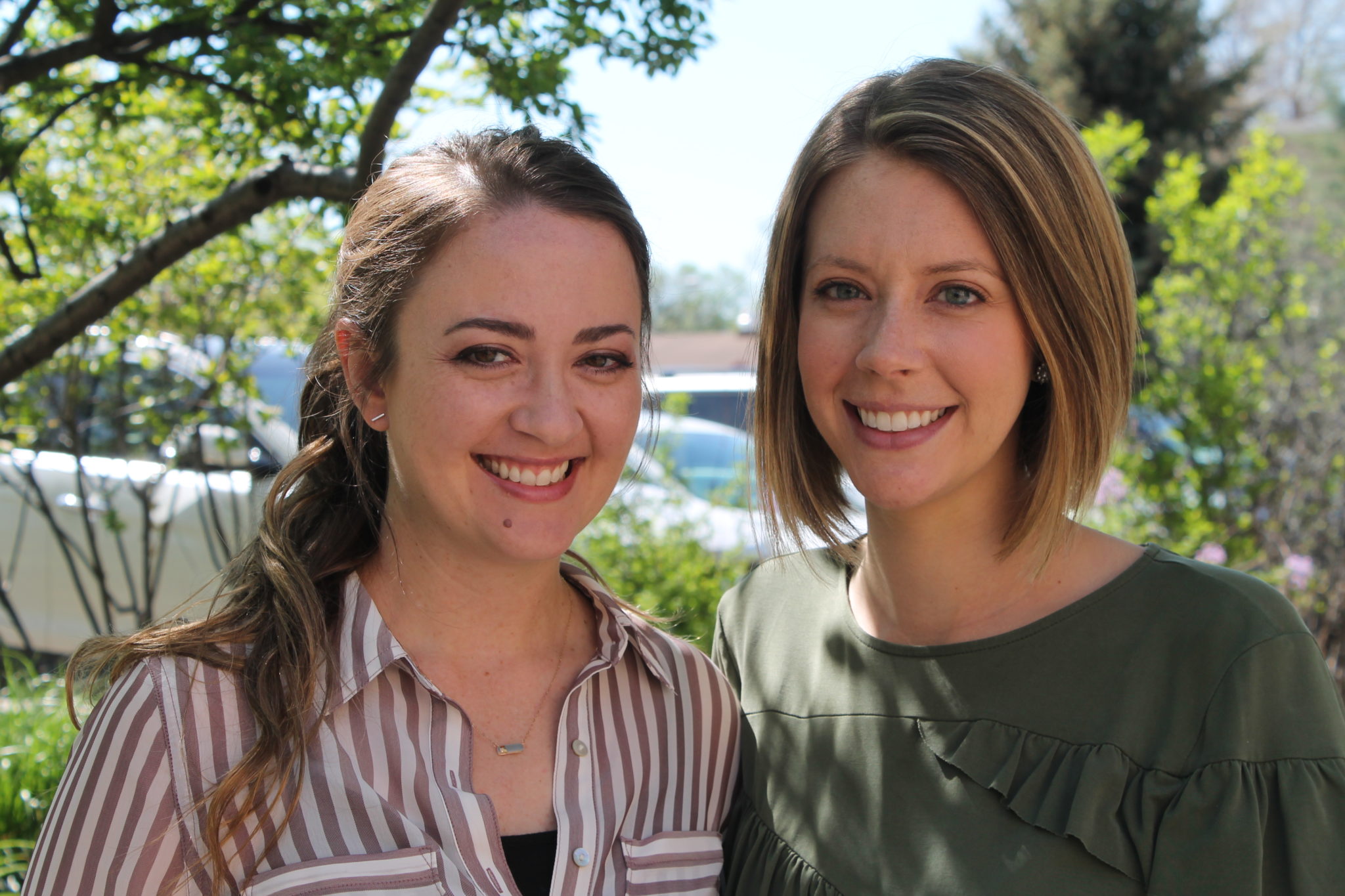
Story by Annie Peyton
Each spring, the Colorado State University campus erupts in a brilliant display of tulips, daffodils and other beautiful flora. The Department of Occupational Therapy is especially grateful this time of year to have its own therapy garden located just outside of its doors. It serves as a relaxing spot for eating lunches and as the occasional impromptu setting for classroom gatherings.
Perhaps most uniquely of all, the garden has provided countless hours of rehabilitation and therapy for others over the years. Along with all of the beauty that the garden offers, it also serves as a reminder to occupational therapy students and faculty alike that sometimes the best therapy is in your own backyard.
A garden designed with everyone in mind
 This garden, located in the southeast corner outside of CSU’s Occupational Therapy Building, has provided an array of colorful blossoms and ripening vegetables every spring since its creation over a decade ago. Using principles of universal accessibility, the garden is meant to be enjoyed by people of all ages and abilities. It incorporates paths of differing materials and garden beds of various heights to accommodate people with wheelchairs and other lifestyle challenges.
This garden, located in the southeast corner outside of CSU’s Occupational Therapy Building, has provided an array of colorful blossoms and ripening vegetables every spring since its creation over a decade ago. Using principles of universal accessibility, the garden is meant to be enjoyed by people of all ages and abilities. It incorporates paths of differing materials and garden beds of various heights to accommodate people with wheelchairs and other lifestyle challenges.
Due to its adaptive accessibility, the garden has become a link between the Occupational Therapy department and its collaborators. Elderhaus, an adult day program in Fort Collins that serves people with special needs, incorporates the opportunities of the garden into its weekly activities. It partners with CSU’s OT department by providing a few master’s students with fieldwork placements each summer where they can hone their therapeutic skills.
Summer days spent in the garden

Katie Ward and Marya Erdesky are two such students who completed their fieldwork at Elderhaus last summer. In addition to working on-site at Elderhaus, they were able to spend many summer days working with Elderhaus participants in the therapy garden. Whether they were engaged in planting flowers, watering vegetables, or creating a summer salad, participants were able to interact with the garden in productive, therapeutic ways.
Tasks weren’t limited to simple watering and weeding, either. According to Ward, group members harvested vegetables to put in summer salads, engaged in scavenger hunts, made bird feeders and crafted nature-inspired jewelry. Erdesky notes that sometimes a therapeutic activity would be as simple as asking a participant to decide whether something was a weed or a plant. “This served as a low-risk opportunity for them to exercise decision-making skills,” she explains.
Therapy behind the activities
One priority of the garden sessions was, according to the students, simply to bring joy to the group members. But while Elderhaus participants might happily lose track of time and forget that they were receiving therapy services, Ward and Erdesky explain how every activity they engaged in was thoughtfully designed to develop attention, sequencing, problem solving, safety awareness and other important life skills.
Both OT students also note the social advantages that their clients were able to enjoy. “For this population, you often see low self-esteem and very little confidence,” explains Erdesky. “By offering the right amount of challenge, we aimed to boost that confidence. Knowing that they belonged and that they had a role to play definitely boosted their self-esteem.”
‘Definitive sign of successful therapy’
As they complete their graduate studies, Ward and Erdesky reflect on their time spent in the garden. “Group members had a variety of diagnoses and skills, and seeing them work together to achieve a common goal was really awesome,” Ward notes. “I really enjoyed using the garden therapeutically and I hope to incorporate gardening into my future practice.”
Remembering a day the participants came together to craft a summer salad, Erdesky reflects, “I saw our participants working together, encouraging one another, and also looking out for each other. They were so excited to taste the fruit of their labor. They recognized that the food they were enjoying existed because of their hard work, and that seemed to me like the definitive sign of successful therapy.”
The Department of Occupational Therapy is part of CSU’s College of Health and Human Sciences.